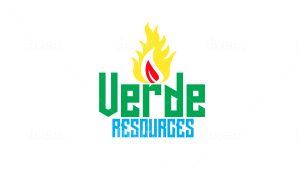 ENERGY ANALYTICS POWER AND RENEWABLES
ENERGY ANALYTICS POWER AND RENEWABLES
In 2021, the U.S. had 12,373 megawatts of newly installed wind capacity, bringing the national total to just under 140,000 megawatts. Declining costs and continued progression in the performance of wind technologies have enhanced the economics of these projects.
Wind energy now generates more than 10% of electricity in 16 states and more than 30% in Iowa, Kansas, Oklahoma and the Dakotas. The capacity factor, a ratio of energy a turbine can produce compared to the amount it could generate at its peak, suggests that wind power operations in the U.S. have improved significantly. Some of the most notable gains are in the “wind belt” region, an area expanding from the Dakotas to Texas, renowned for receiving large amounts of wind. A significant proportion of this gain is due to improvements in wind turbine technology and expanding blade and tower sizes. While the wind belt region remains a top priority for wind development nationwide, the emerging trend of larger structures has enabled wind operators to develop sites elsewhere with lower average wind speeds. There may be higher initial costs associated with constructing more substantial turbines but based on a price-per-watt basis, it is cheaper in the long term and generates a more efficient level of energy production.
These industry developments and continued progress are making wind energy far more affordable. In 2009, the average price of wind power purchase agreements in the U.S. peaked at $70 per megawatt-hour. Today in the wind belt region, the figure stands at approximately $20, and on average, $30 for other locations elsewhere.
Offshore wind development plans in the U.S.
Driven by a continued decline in offshore wind project costs, government incentives and commitments, the U.S. offshore wind pipeline increased by 24% over the last year, with more than 35,000 megawatts of offshore wind projects currently in various stages of development. The Vineyard Wind 1 in Massachusetts represents the first commercial-scale offshore wind project to gain approval in the U.S. There are now 15 offshore projects that have progressed to a permitting stage.
The Biden Administration has committed to reaching net-zero emissions by 2050. This goal requires a significant expansion of renewable energy. The National Renewable Energy Laboratory has pointed to the U.S. offshore wind industry as having the potential to provide over 2,000 gigawatts of generating capacity, approximately double the electricity consumed annually nationwide.
The DOE has set a target of 30 gigawatts of offshore wind in operation by 2030. Today’s current offshore wind capacity stands at just a little over 40 megawatts, so there is still a long way to go. Industry experts believe that offshore wind combined with the necessary strategic planning can create job opportunities and support further economic development in much-needed regions.
Below is a chart of the top 10 U.S. wind developers by megawatt within our Enverus Power & Renewables platform. Each business listed represents a critical contribution to the future growth and development of the U.S. wind industry.
Figure 1: Top 10 U.S. Wind Developers by Megawatt of Total Wind Capacity

Figure 2: Wind Capacity by Currently Operating, Under Construction and Pre-Construction

Top 10 Wind Developers in the U.S.
| RANK | DEVELOPER | OPERATING | UNDER CONSTRUCTION | PRE-CONSTRUCTION | TOTAL |
| 1 | NextEra Energy Resources | 19,601 | 1,633 | 6,653 | 27,887 |
| 2 | Invenergy | 12,079 | 2,284 | 4,683 | 19,046 |
| 3 | APEX Clean Energy | 6,946 | 0 | 9,187 | 16,133 |
| 4 | Avangrid Renewables | 7,865 | 1,052 | 5,435 | 14,352 |
| 5 | EDF Renewable Energy | 7,443 | 393 | 4,492 | 12,328 |
| 6 | Orsted | 4,307 | 567 | 6,802 | 11,676 |
| 7 | EDP Renewables | 8,536 | 250 | 523 | 9,309 |
| 8 | Equinor | 0 | 0 | 8,532 | 8,532 |
| 9 | Tradewind Energy | 5,293 | 315 | 1,102 | 6,710 |
| 10 | E.ON Climate & Renewables | 4,730 | 441 | 989 | 6,160 |


You must be logged in to post a comment.